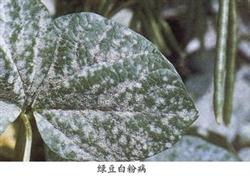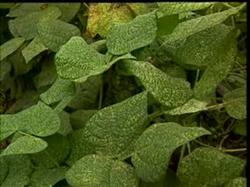Matters needing attention in planting broad bean
Broad bean is a unique kind of beans, its pods are relatively thick, so it is also called Buddha bean, it has good adaptability and has been planted all over the country. The nutritional and medicinal value of broad bean is higher than that of education, and it is widely used. Now the delicious food made from broad bean is very popular. So what we need to know today is what problems we need to pay attention to when planting broad bean. Let's take a look.

1. Time
The planting time is also different in different regions because of the different climate, so what we need to pay attention to is to decide the planting time according to the specific climate of the location. in our country, it is generally planted in autumn and winter without you, and it is best to sow around October to November, while in some places the suitable sowing time of broad bean is around January or February or March or April. So the planting time is a small problem that needs to be paid attention to.
2. Soil
The soil planted with broad bean had better be rich in organic matter sand or loam with fertile soil and good drainage, in which the pH of the soil should be moderate, and the alkaline soil is also a good choice. It should be noted here that the previous crop of the selected planting land cannot be melon, fruit and legume crops, and continuous cropping can not be carried out on the same piece of land, which will affect the growth of broad beans.
3. Temperature
Broad bean wants to be strict in temperature, mainly because it is neither cold-resistant nor high-temperature-resistant. The most suitable temperature for broad bean growth is about 20 to 25 degrees, while the temperature at which broad beans are most likely to sprout is about 16 to 18 degrees. Therefore, we should plant in strict accordance with the living habits of broad beans, so that broad beans can grow better and yield higher.
4. Fertilizer and water
Broad bean is a kind of wet plant, but it is not resistant to waterlogging at the same time, so the management of water in the field should be more direct and decisive, watering a lot when necessary, and timely drainage when the soil is wet through. At the same time, it should also be drained in time when there is heavy rainfall. Broad bean its growth needs a lot of nutrients, but fertilization is principled, do not apply nitrogen fertilizer, this will lead to excessive growth of branches and leaves, there is only long branches and leaves without pods, so we can only apply some nitrogen fertilizer appropriately, and then apply potash and phosphate fertilizer reasonably.
5. Pruning
The growth rate of broad bean is relatively fast. When the main stem of broad bean grows to about ten centimeters, we need to remove the heart of Ah Jing's main stem, which can promote the growth of lateral branches, because the main stem of broad bean generally does not bear pods. So in order to increase the yield of broad bean, we can only promote the growth of lateral branches. Secondly, when the lateral branches grow to a certain extent, we can remove the top tips. This can quickly enter the flowering stage, and the tender tip can also be used for cooking, which can be said to kill two birds with one stone.
- Prev

Mung bean mothproof method
Symptoms: mung bean powdery mildew harm leaves, stems and pods. Leaves damaged, scattered white powdery mildew spots on the surface, when the climate is appropriate, the diseased leaves are covered with powdery matter, serious, yellow leaves, early fall off. Young pods are damaged, deformed, white powder on the surface, and black in the white powder later.
- Next

Mung bean pest: wild bean borer
(1) the damage condition is also known as cowpea pod borer, pod wild borer, cowpea borer. It is widely distributed in China, and it occurs seriously in the south of the Yangtze River. The larvae eat the host flower organs, causing falling flowers; eating pods, causing pods to fall in the early stage, and causing pods and seeds to rot in the later stage. In addition, it can also spin silk to curl several leaves together.
Related
- The first cup of black tea in spring, the flavor and history of tea gardens in Kenya, Africa
- The computer can not only choose potatoes, but also grow tea rice. AI will grow winter oolong tea champion.
- It is not only the inflated tea bitten by insects, but also engraved with the four seasons tea in Beipu.
- The Oriental Beauty Tea Festival in Zhuxian County takes the stage at the weekend to experience the plus-size feast of oil tea.
- & quot; Oriental Beauty Tea & Exploration of Emei in Hsinchu, the hometown of quot;
- The new variety of strawberry "Tainong 1" dessert is the first choice with mellow aroma. Crimson gorgeous
- History of Tea in Taiwan: from Wild Inner Mountain to Export Tea Garden
- Two types of Taiwan Oriental Beauty Black Tea won the British three-Star Award for Childhood Tea Xiang Zhang Jiaqi changed from pilot to champion tea maker.
- Banana species and varieties: the planting history of Taiwan Xianren banana and dwarf banana is long, is banana disease resistant?
- Coffee planting Technology: Qianjie Coffee from Seedling to harvesting

